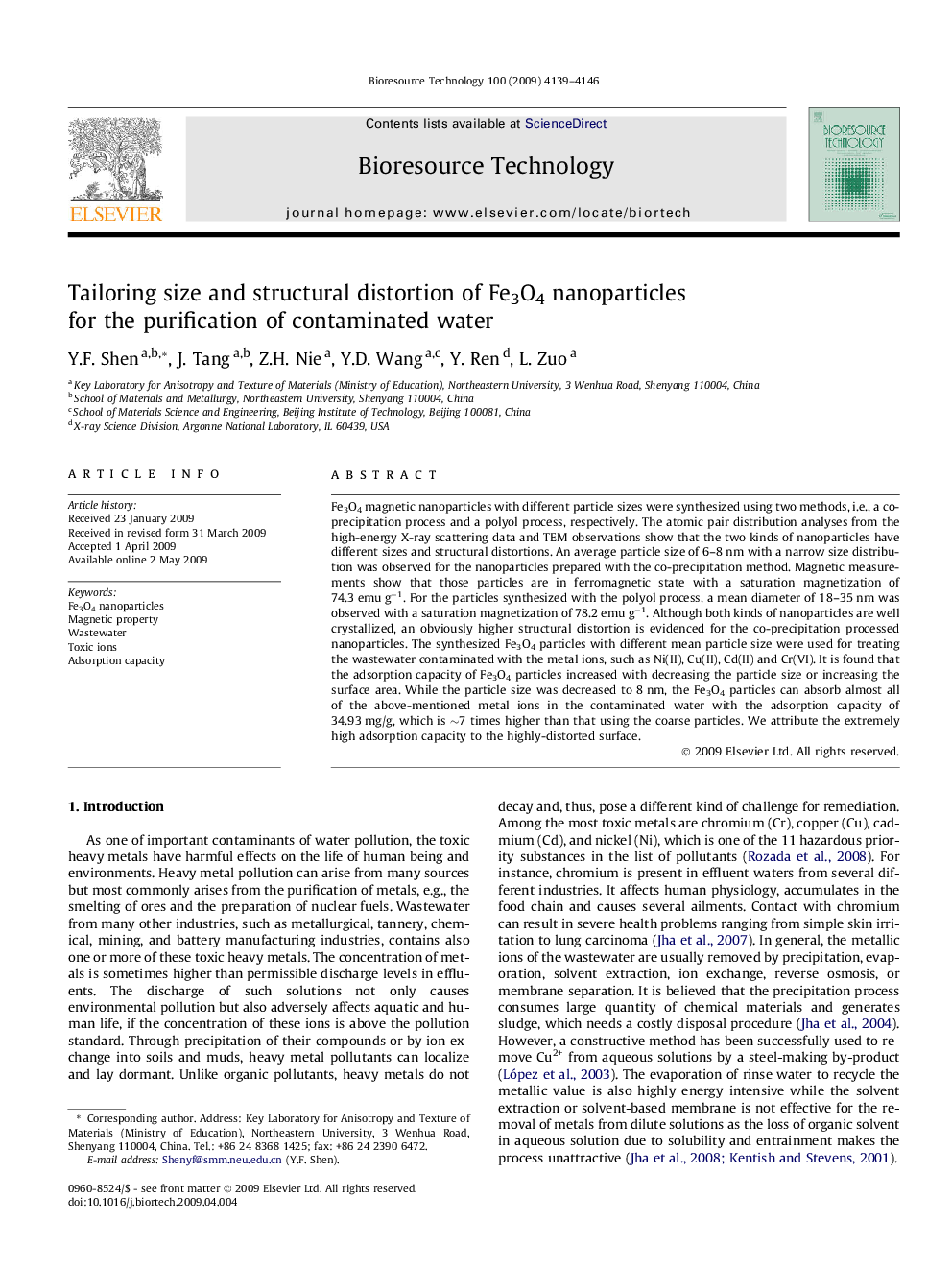| Article ID | Journal | Published Year | Pages | File Type |
|---|---|---|---|---|
| 684621 | Bioresource Technology | 2009 | 8 Pages |
Abstract
Fe3O4 magnetic nanoparticles with different particle sizes were synthesized using two methods, i.e., a co-precipitation process and a polyol process, respectively. The atomic pair distribution analyses from the high-energy X-ray scattering data and TEM observations show that the two kinds of nanoparticles have different sizes and structural distortions. An average particle size of 6-8 nm with a narrow size distribution was observed for the nanoparticles prepared with the co-precipitation method. Magnetic measurements show that those particles are in ferromagnetic state with a saturation magnetization of 74.3 emu gâ1. For the particles synthesized with the polyol process, a mean diameter of 18-35 nm was observed with a saturation magnetization of 78.2 emu gâ1. Although both kinds of nanoparticles are well crystallized, an obviously higher structural distortion is evidenced for the co-precipitation processed nanoparticles. The synthesized Fe3O4 particles with different mean particle size were used for treating the wastewater contaminated with the metal ions, such as Ni(II), Cu(II), Cd(II) and Cr(VI). It is found that the adsorption capacity of Fe3O4 particles increased with decreasing the particle size or increasing the surface area. While the particle size was decreased to 8 nm, the Fe3O4 particles can absorb almost all of the above-mentioned metal ions in the contaminated water with the adsorption capacity of 34.93 mg/g, which is â¼7 times higher than that using the coarse particles. We attribute the extremely high adsorption capacity to the highly-distorted surface.
Related Topics
Physical Sciences and Engineering
Chemical Engineering
Process Chemistry and Technology
Authors
Y.F. Shen, J. Tang, Z.H. Nie, Y.D. Wang, Y. Ren, L. Zuo,
